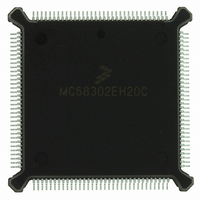MC68302EH20C Freescale Semiconductor, MC68302EH20C Datasheet - Page 284

MC68302EH20C
Manufacturer Part Number
MC68302EH20C
Description
IC MPU MULTI-PROTOCOL 132-PQFP
Manufacturer
Freescale Semiconductor
Datasheets
1.MC68302AG20C.pdf
(4 pages)
2.MC68302AG20C.pdf
(2 pages)
3.MC68302AG20C.pdf
(13 pages)
4.MC68302EH20C.pdf
(481 pages)
Specifications of MC68302EH20C
Processor Type
M683xx 32-Bit
Speed
20MHz
Voltage
5V
Mounting Type
Surface Mount
Package / Case
132-MQFP, 132-PQFP
Family Name
M68000
Device Core
ColdFire
Device Core Size
32b
Frequency (max)
20MHz
Instruction Set Architecture
RISC
Supply Voltage 1 (typ)
5V
Operating Temp Range
0C to 70C
Operating Temperature Classification
Commercial
Mounting
Surface Mount
Pin Count
132
Package Type
PQFP
Lead Free Status / RoHS Status
Lead free / RoHS Compliant
Features
-
Lead Free Status / Rohs Status
Compliant
Available stocks
Company
Part Number
Manufacturer
Quantity
Price
Company:
Part Number:
MC68302EH20C
Manufacturer:
Freescale Semiconductor
Quantity:
10 000
Part Number:
MC68302EH20C
Manufacturer:
FREESCALE
Quantity:
20 000
Company:
Part Number:
MC68302EH20CB1
Manufacturer:
Freescale Semiconductor
Quantity:
10 000
Company:
Part Number:
MC68302EH20CR2
Manufacturer:
Freescale Semiconductor
Quantity:
10 000
- MC68302AG20C PDF datasheet
- MC68302AG20C PDF datasheet #2
- MC68302AG20C PDF datasheet #3
- MC68302EH20C PDF datasheet #4
- Current page: 284 of 481
- Download datasheet (2Mb)
Signal Description
DREQ/PA13—DMA Request
This input is asserted by a peripheral device to request an operand transfer between that
peripheral device and memory. In the cycle steal request generation mode, this input is
edge-sensitive. In burst mode, it is level-sensitive.
DACK/PA14—DMA Acknowledge
This output, asserted by the IDMA, signals to the peripheral that an operand is being trans-
ferred in response to a previous transfer request.
DONE/PA15—DONE
This bidirectional, open-drain signal is asserted by the IDMA or by a peripheral device during
any IDMA bus cycle to indicate that the data being transferred is the last item in a block. The
IDMA asserts this signal as an output during a bus cycle when the byte count register is dec-
remented to zero. Otherwise, this pin is an input to the IDMA to terminate IDMA operation.
5.17 IACK OR PIO PORT B PINS
The IACK or PIO port B pins are shown in Figure 5-14.
Each one of these three pins can be used either as an interrupt acknowledge signal or as a
general-purpose parallel I/O port. Note that the IMP interrupt controller does not require the
use of the IACK pins when it supplies the interrupt vector for the external source. The input
buffers have Schmitt triggers.
IACK7/PB0
IACK6/PB1
IACK1/PB2—Interrupt Acknowledge/Port B I/O
As IACK1, IACK6, and IACK7, these active low output signals indicate to the external device
that the MC68302 is executing an interrupt acknowledge cycle. The external device must
then place its vector number on the lower byte of the data bus or use AVEC for autovectoring
(unless internal vector generation is used).
5.18 TIMER PINS
The timer pins are shown in Figure 5-15.
5-20
Figure 5-14. IACK or PIO Port B Pins
MC68302 USER’S MANUAL
MC68302
IACK7 / PB0
IACK6 / PB1
IACK1 / PB2
MOTOROLA
Related parts for MC68302EH20C
Image
Part Number
Description
Manufacturer
Datasheet
Request
R
Part Number:
Description:
Manufacturer:
Freescale Semiconductor, Inc
Datasheet:

Part Number:
Description:
MC68302 Configuring the Chip Selects on the MC68302
Manufacturer:
Motorola / Freescale Semiconductor

Part Number:
Description:
MC68302 Design Concept - Expanding Interrupts on the MC68302
Manufacturer:
Motorola / Freescale Semiconductor

Part Number:
Description:
MC68302 MC68302 Adapting a WAN Controller to a LAN Environment
Manufacturer:
Motorola / Freescale Semiconductor

Part Number:
Description:
MC68302 EKB Applications - Power Measurements on the MC68302
Manufacturer:
Motorola / Freescale Semiconductor

Part Number:
Description:
MC68302 Interfacing the MC68020 to a Slave MC68302
Manufacturer:
Motorola / Freescale Semiconductor

Part Number:
Description:
MC68302 MC68302 Software Performance
Manufacturer:
Motorola / Freescale Semiconductor

Part Number:
Description:
MC68302 Evaluating EDX on the ADS302
Manufacturer:
Motorola / Freescale Semiconductor

Part Number:
Description:
MC68302 Design Advisory #1 - MC68SC302 Passive ISDN Protocol Engine
Manufacturer:
Motorola / Freescale Semiconductor

Part Number:
Description:
MC68302, MC68360, and MPC860 Characteristics and Design Notes for Crystal Feedback Oscillators
Manufacturer:
Motorola / Freescale Semiconductor
Part Number:
Description:
Mc68302 Integrated Multi-protocol Processor
Manufacturer:
Freescale Semiconductor, Inc
Datasheet:
Part Number:
Description:
Manufacturer:
Freescale Semiconductor, Inc
Datasheet:
Part Number:
Description:
Manufacturer:
Freescale Semiconductor, Inc
Datasheet:
Part Number:
Description:
Manufacturer:
Freescale Semiconductor, Inc
Datasheet:
Part Number:
Description:
Manufacturer:
Freescale Semiconductor, Inc
Datasheet:











